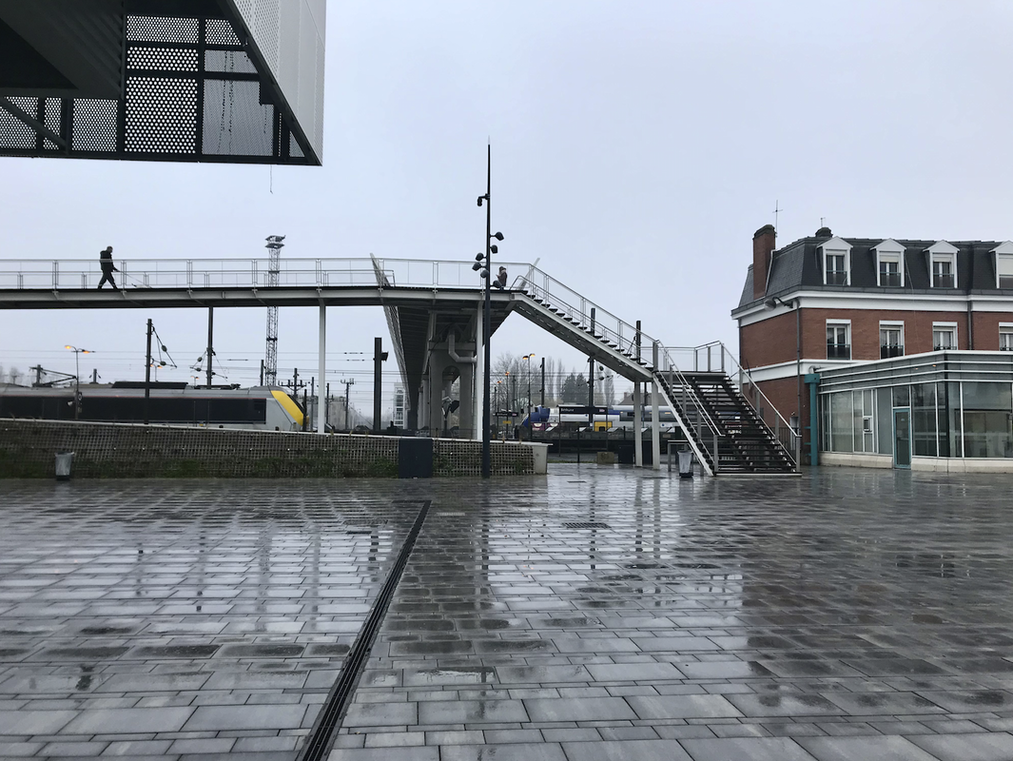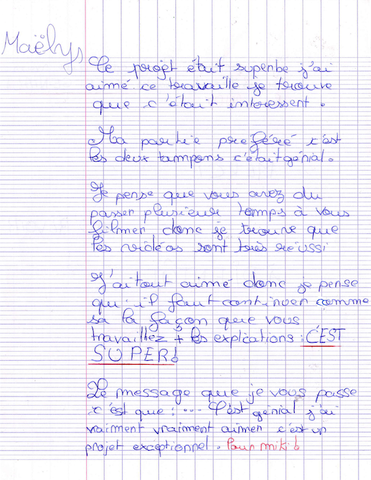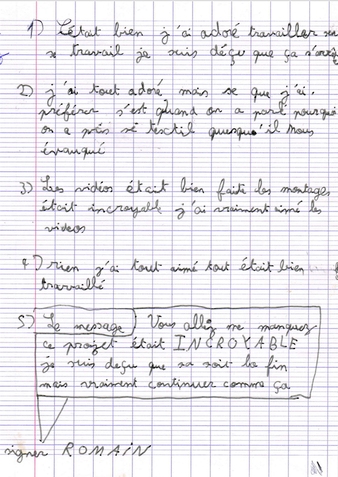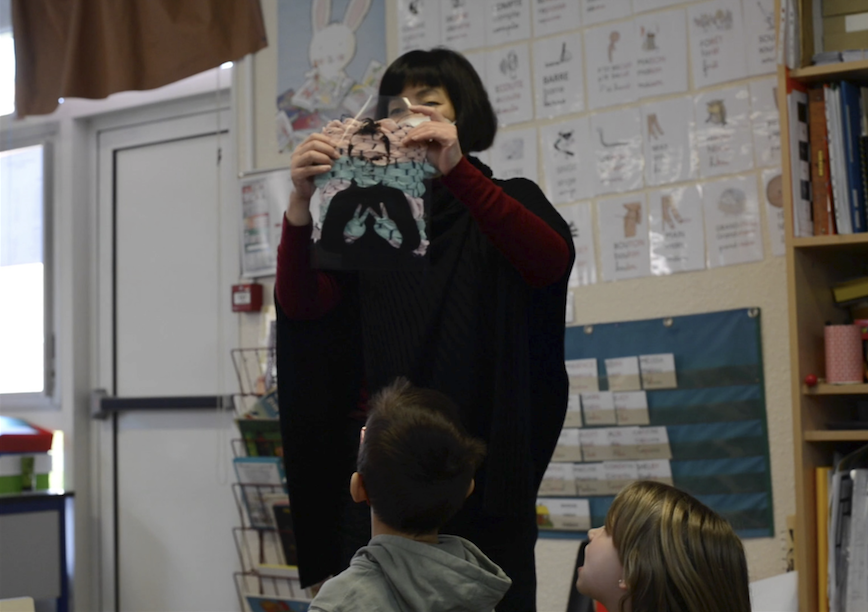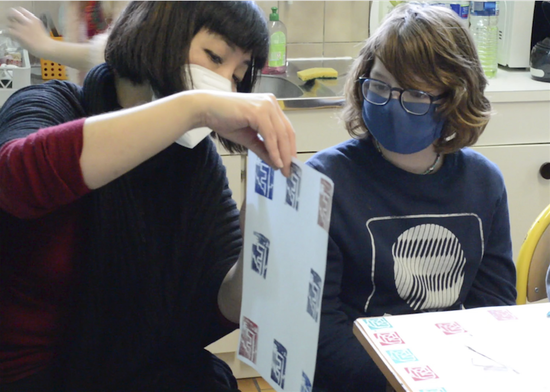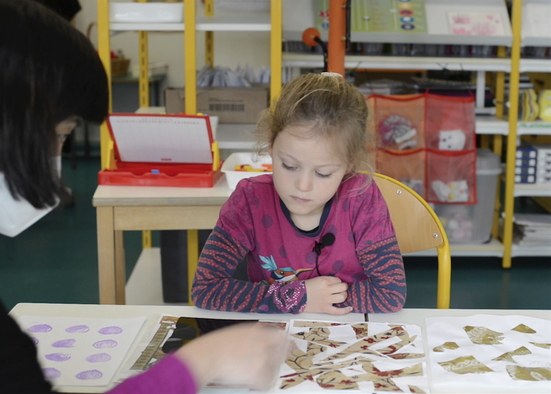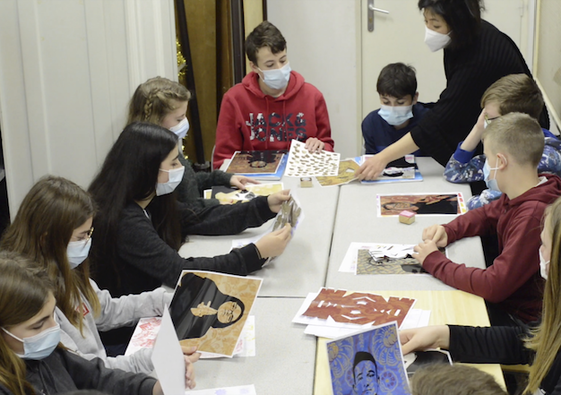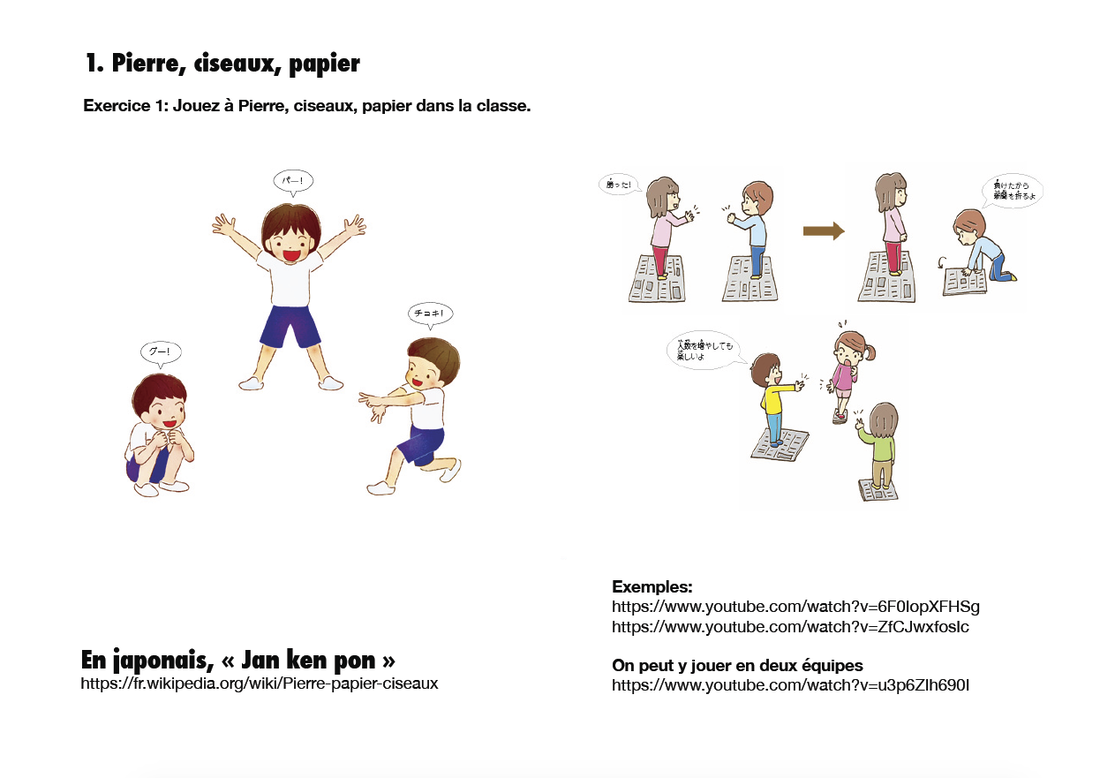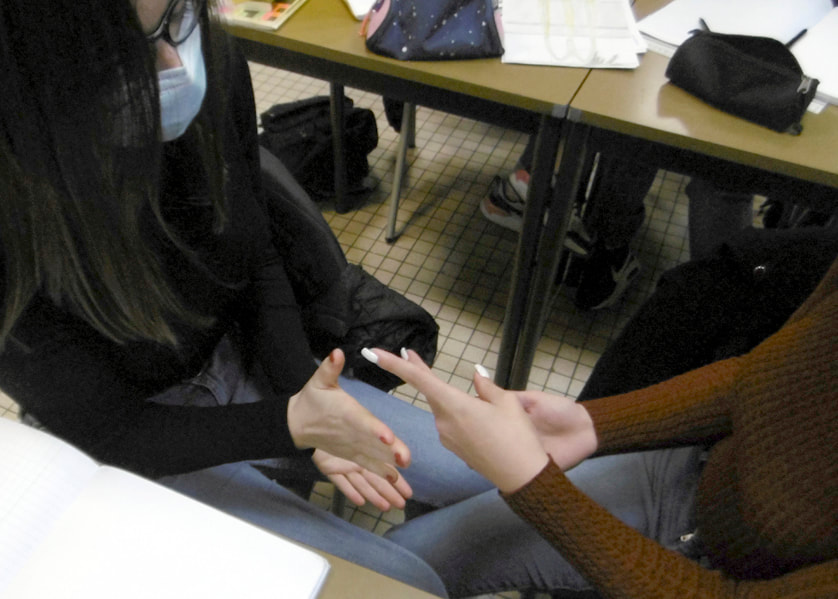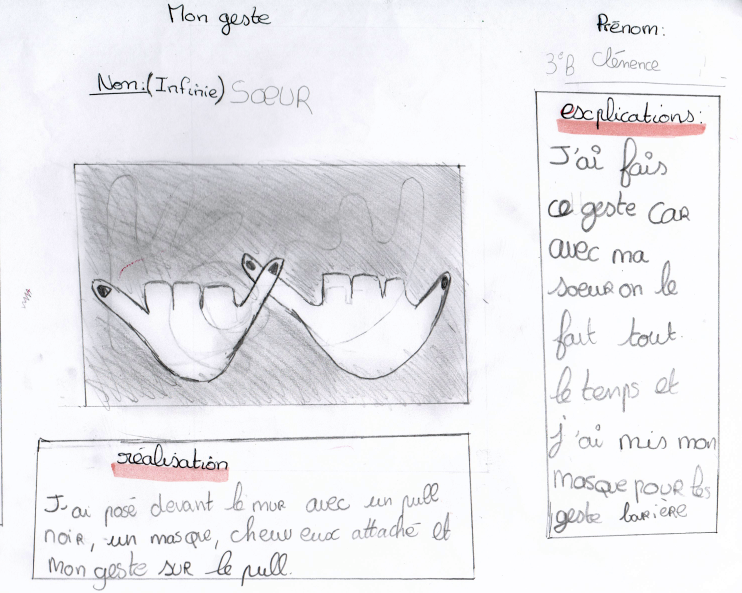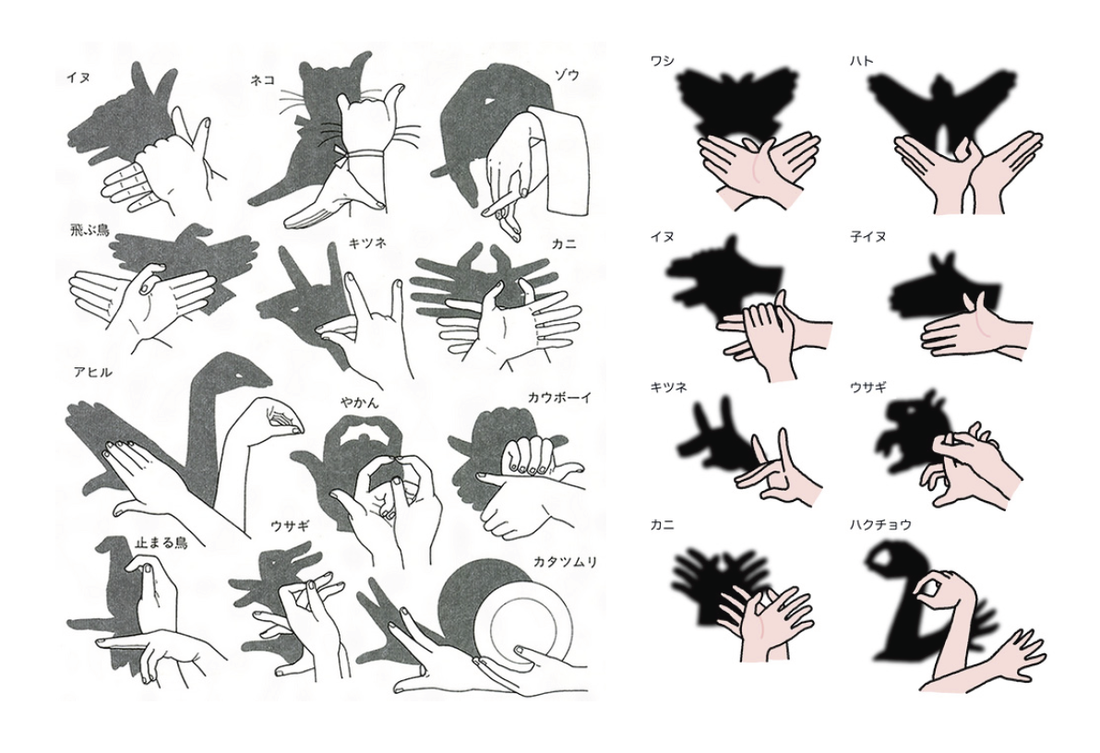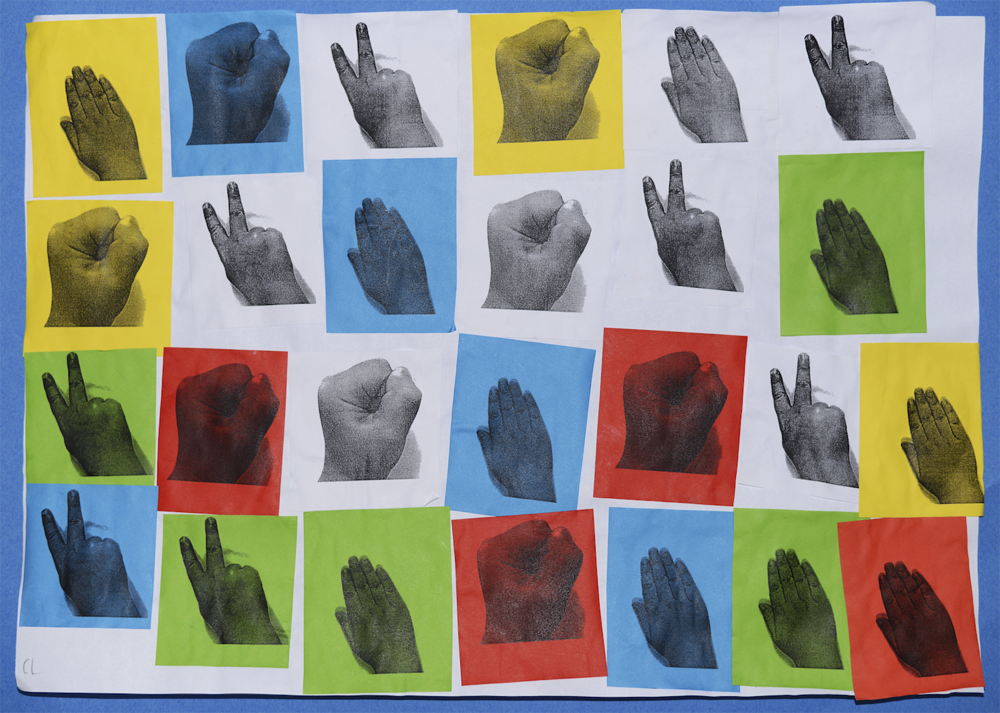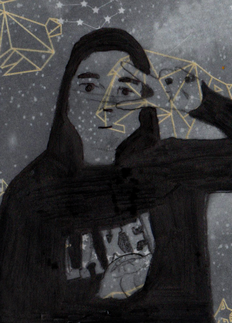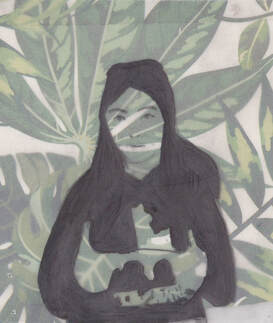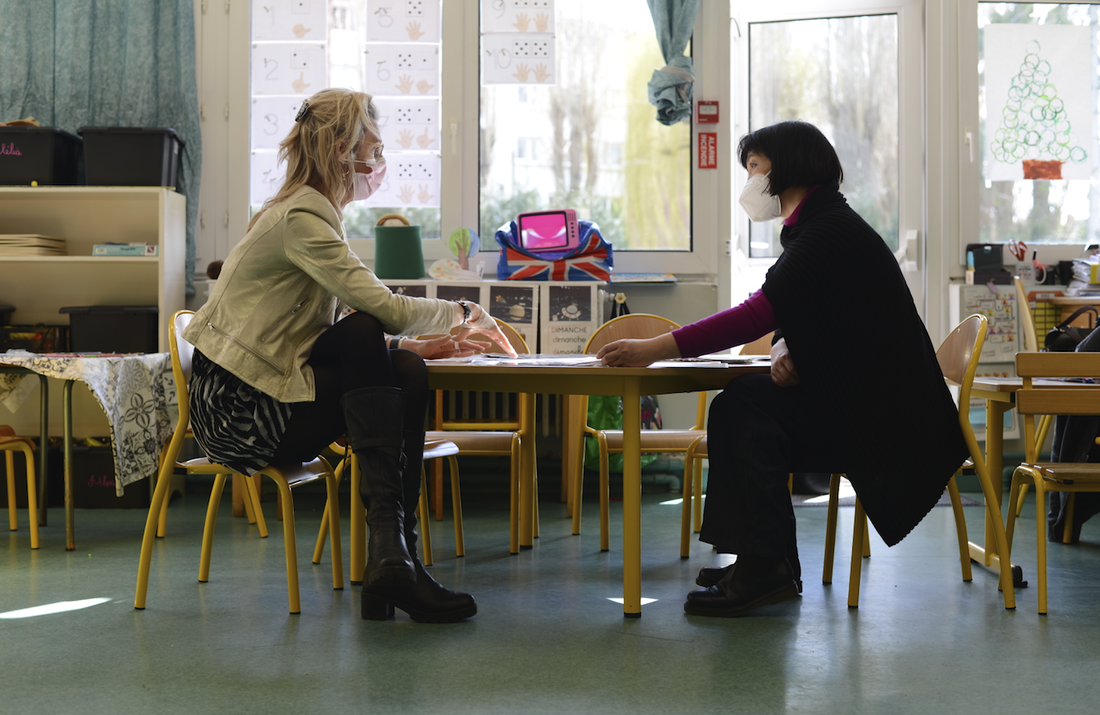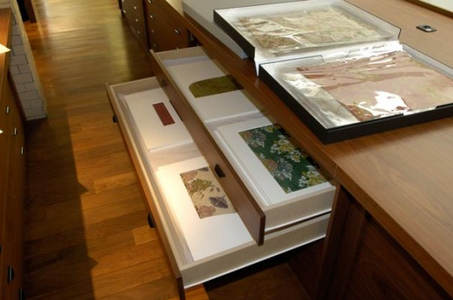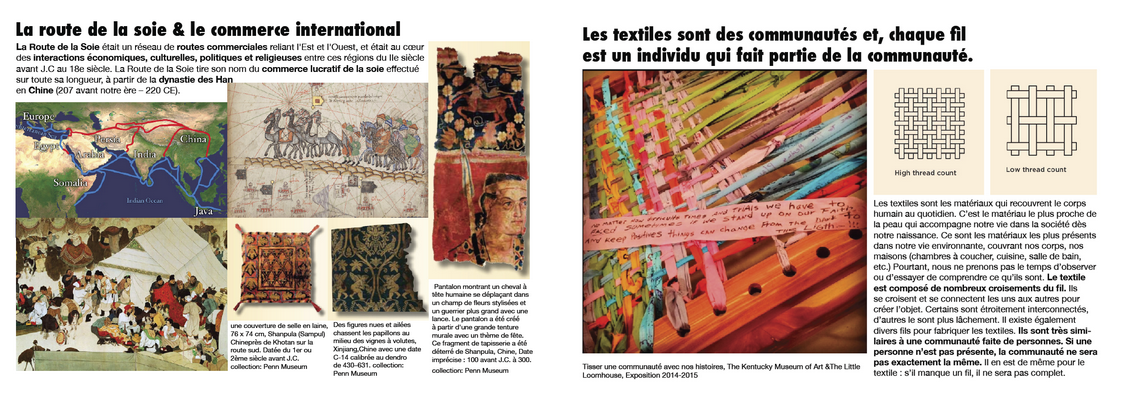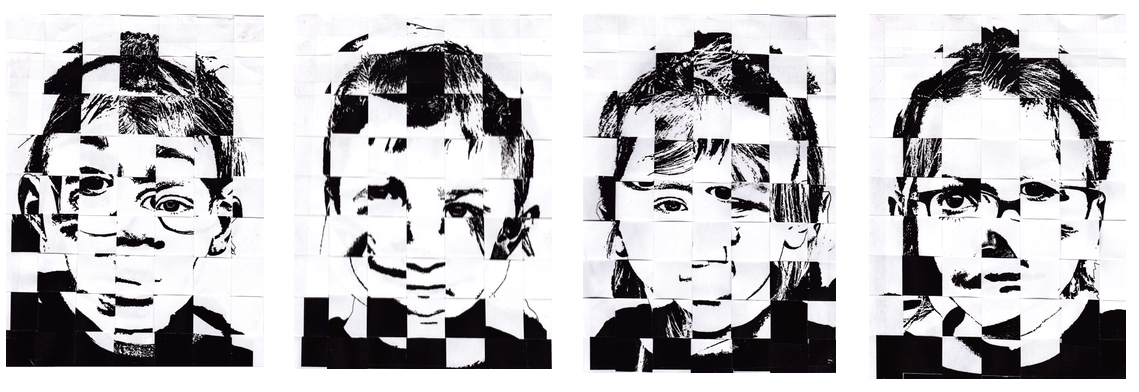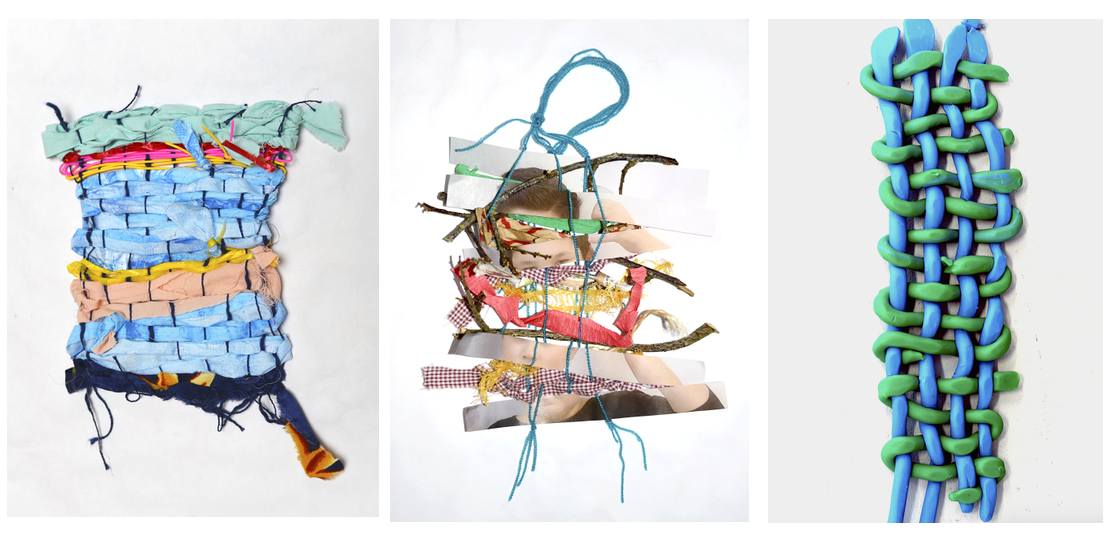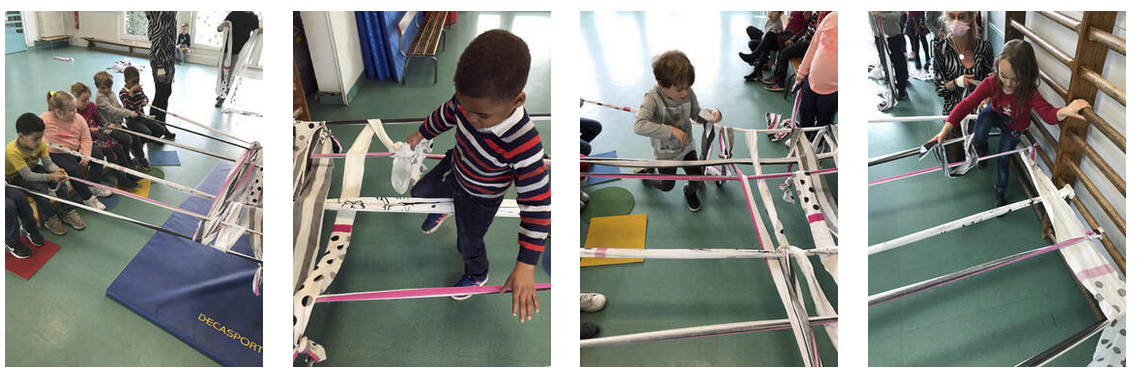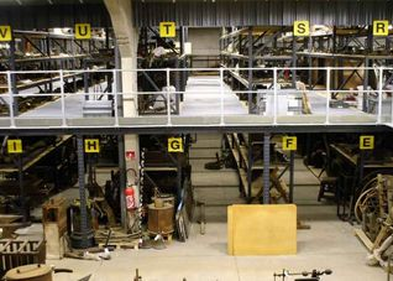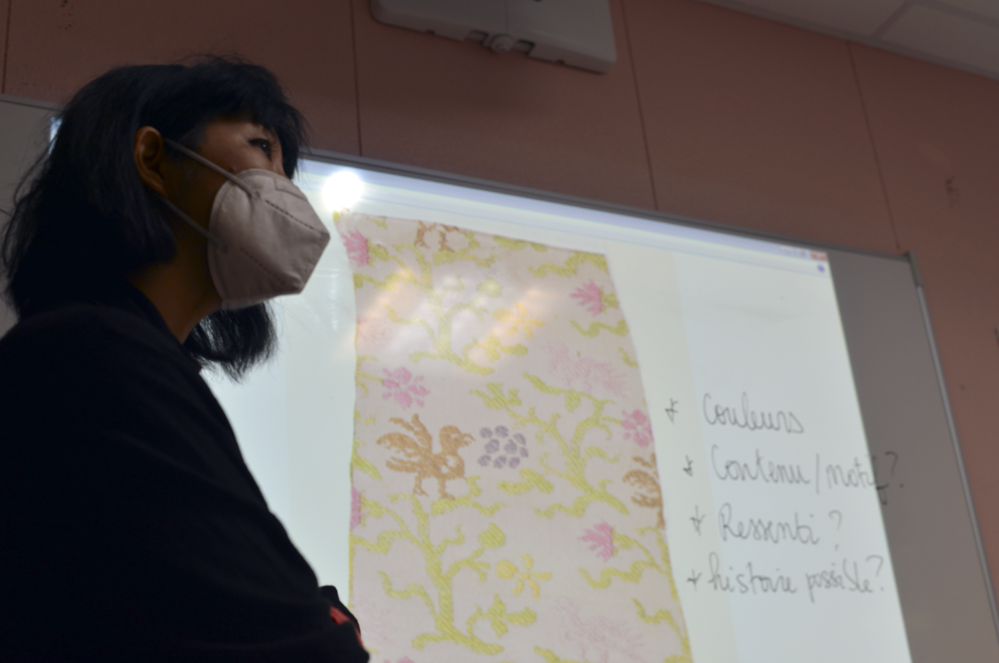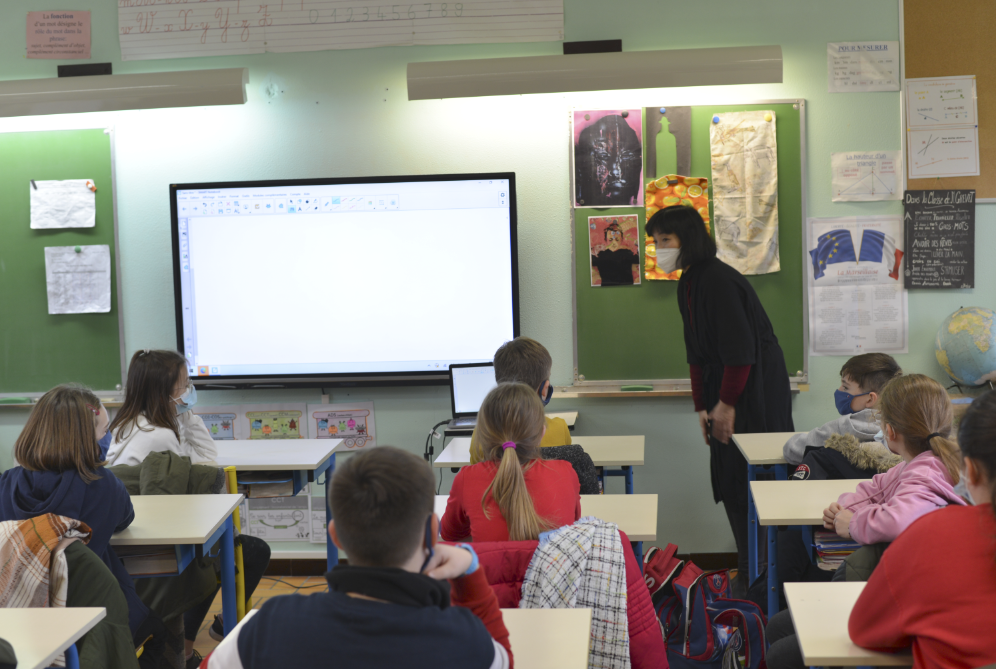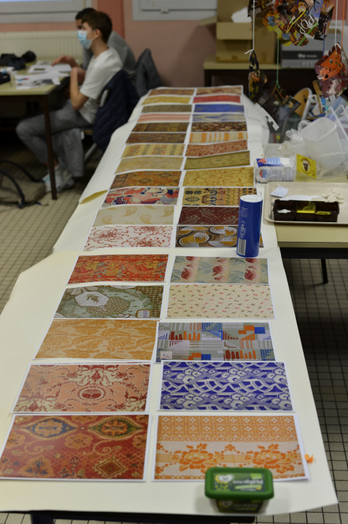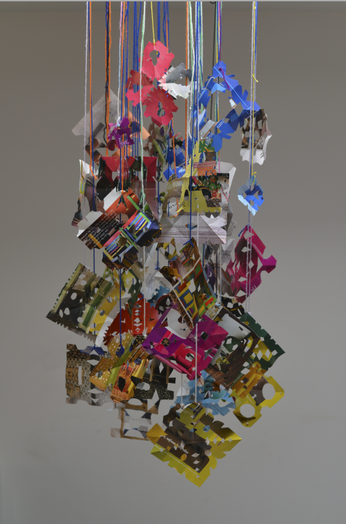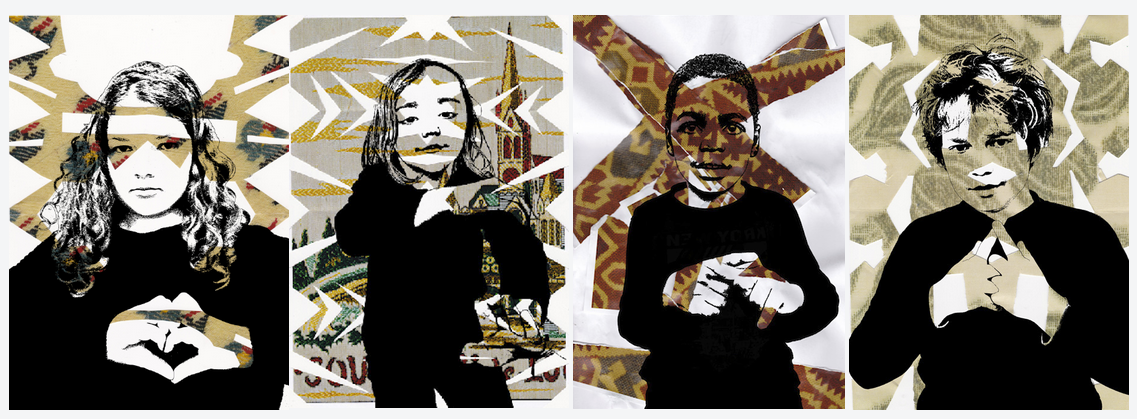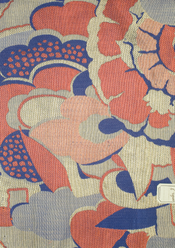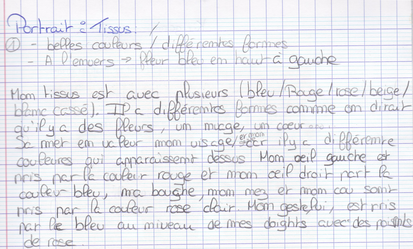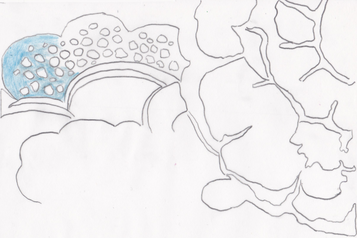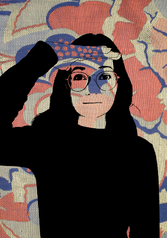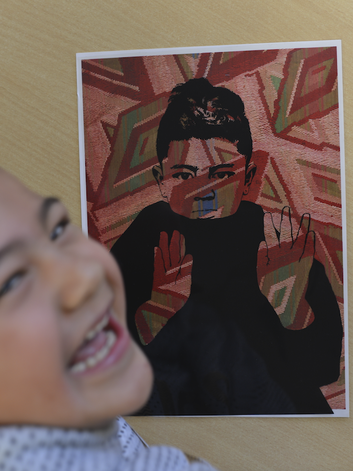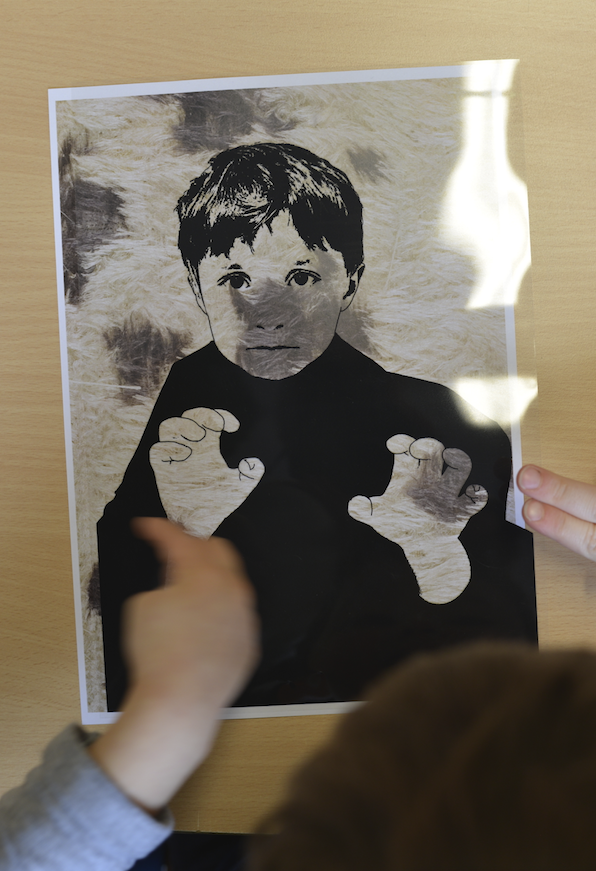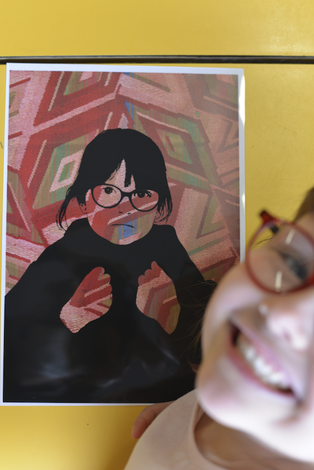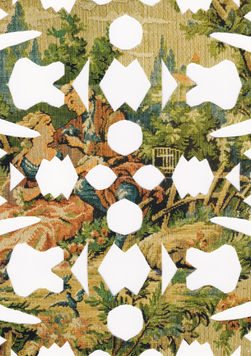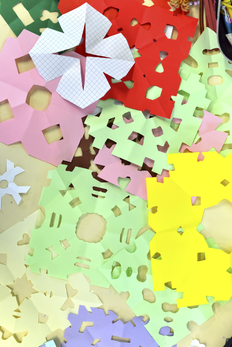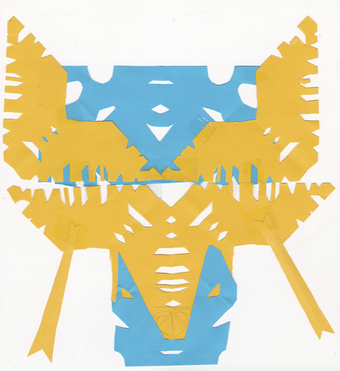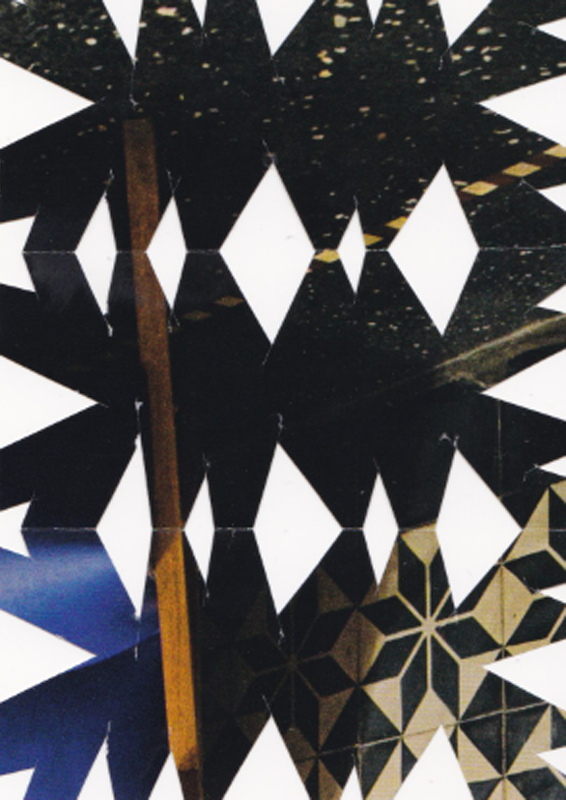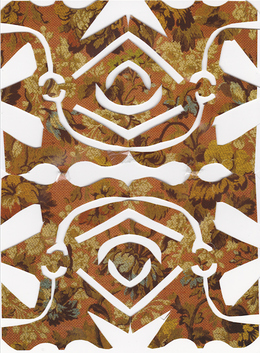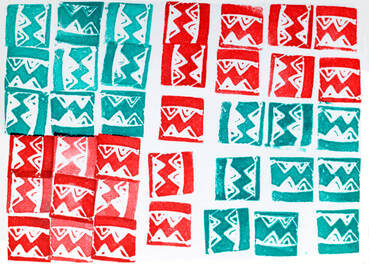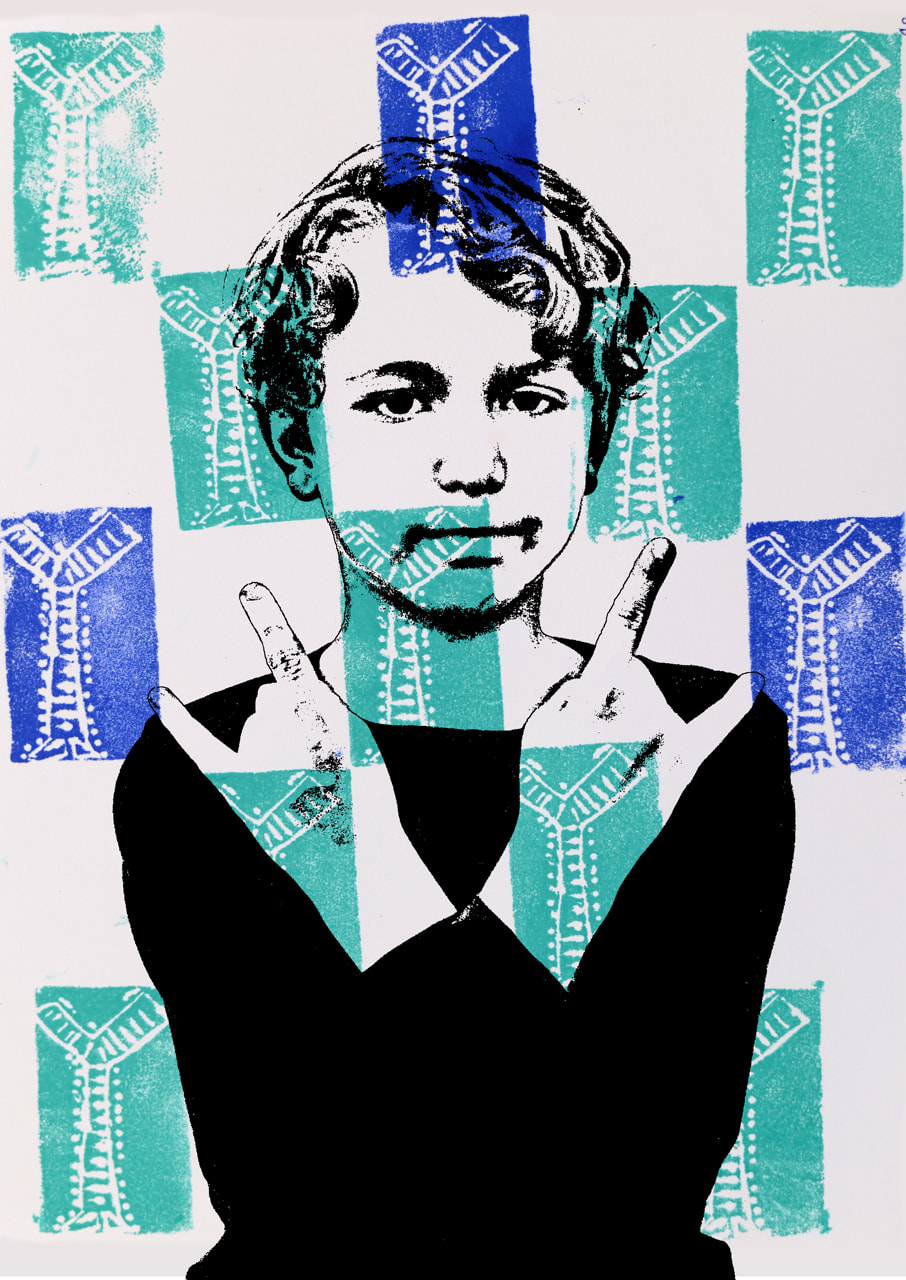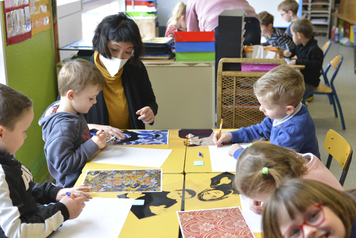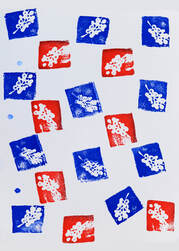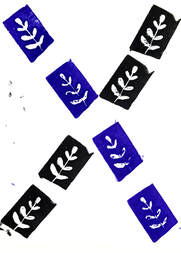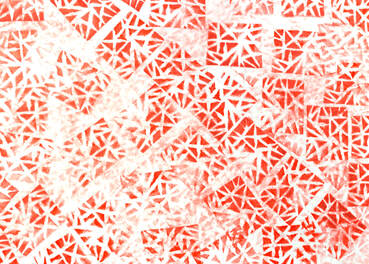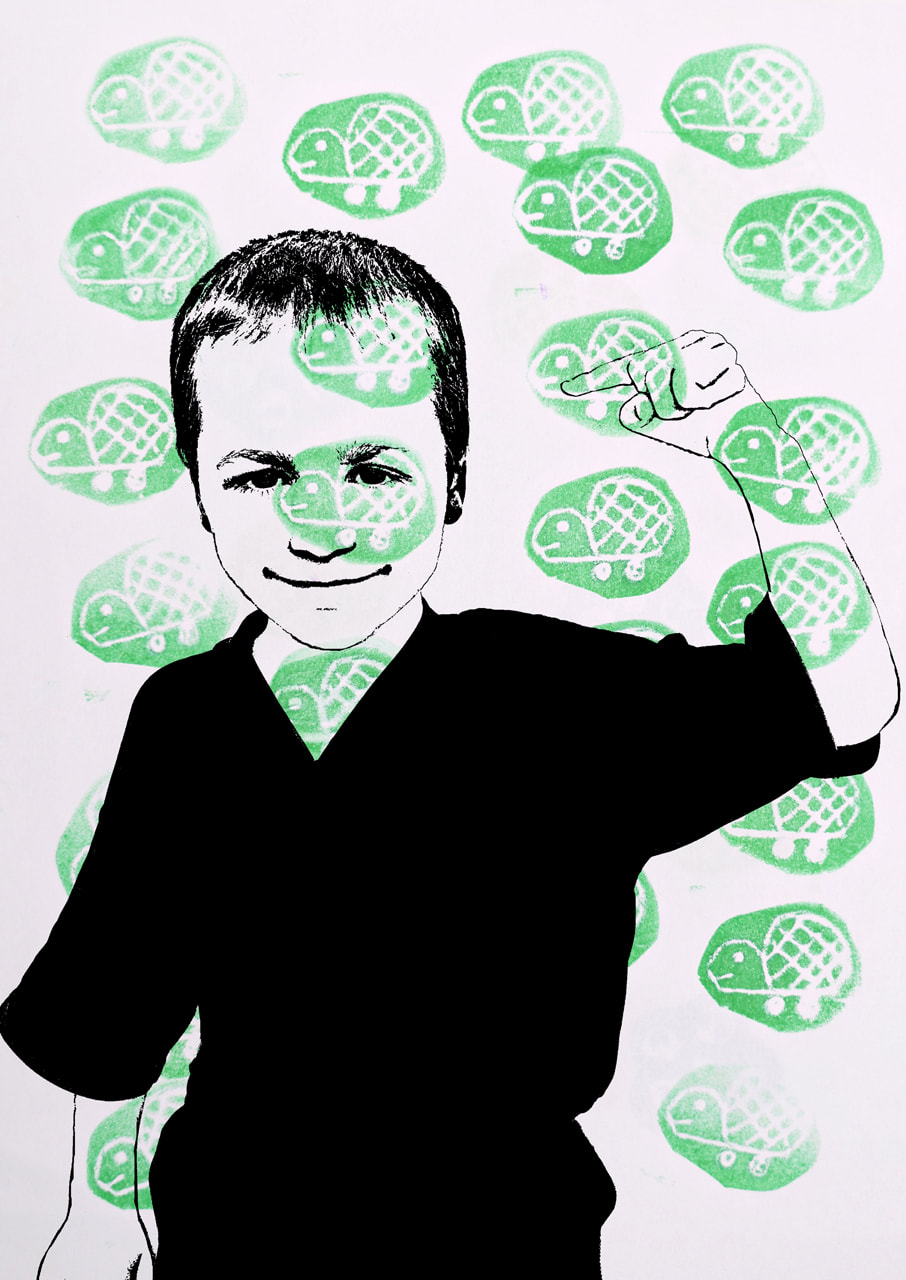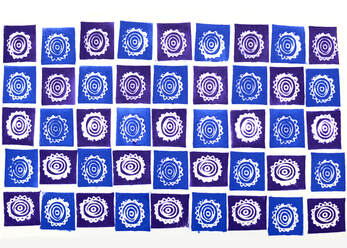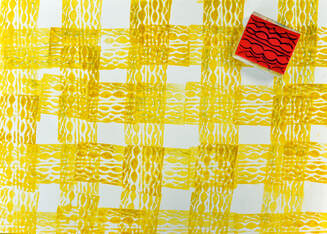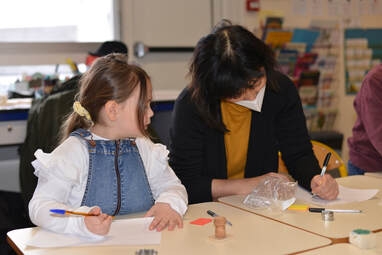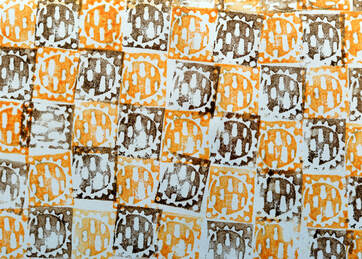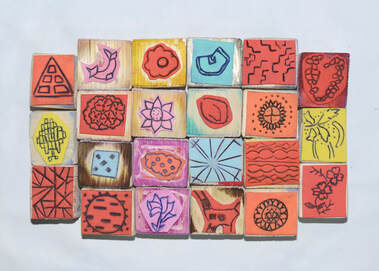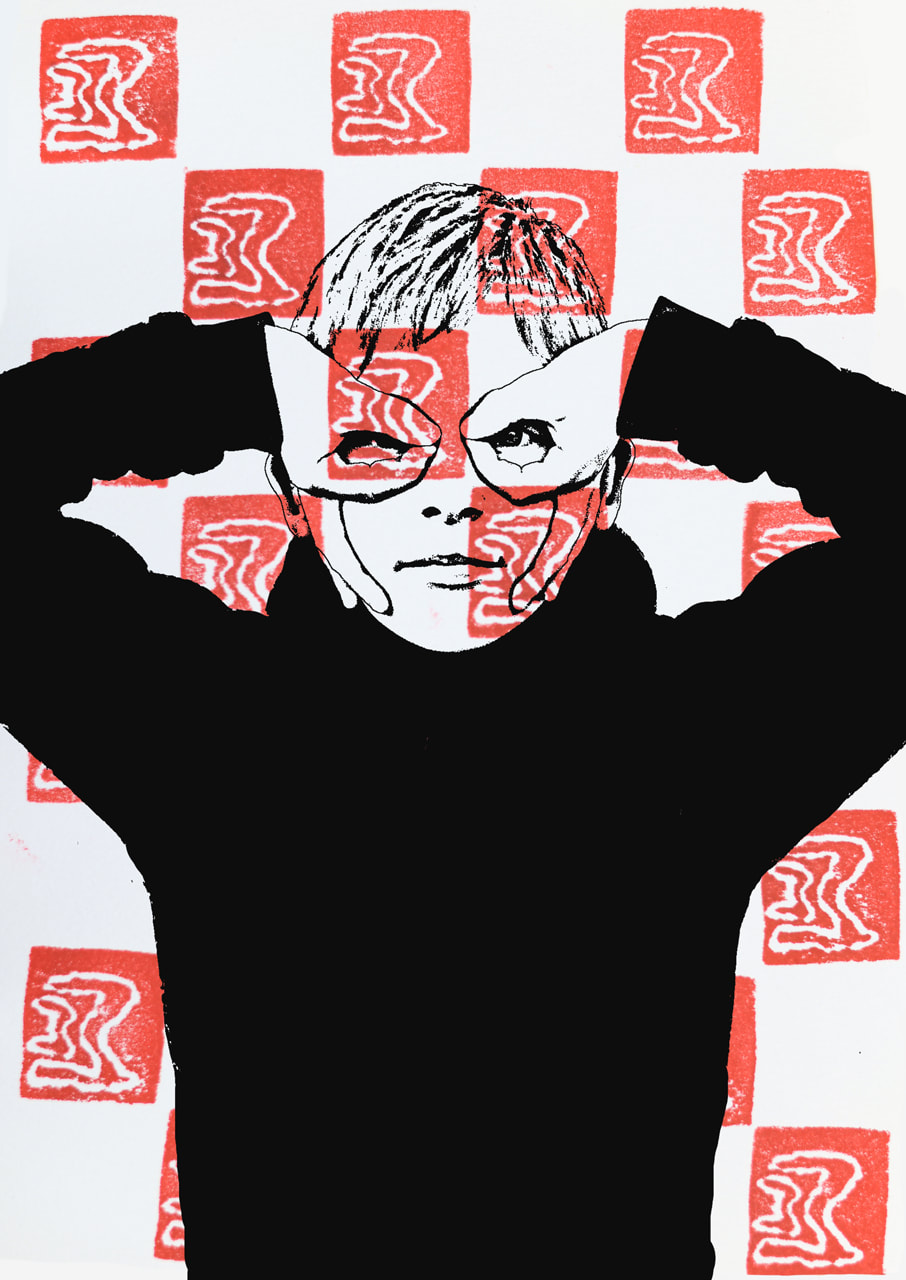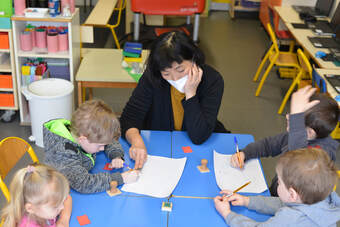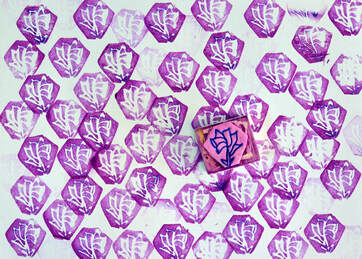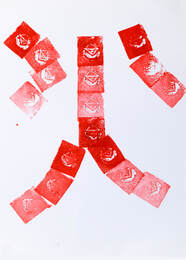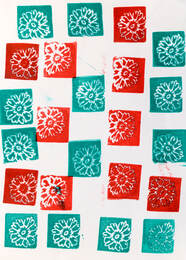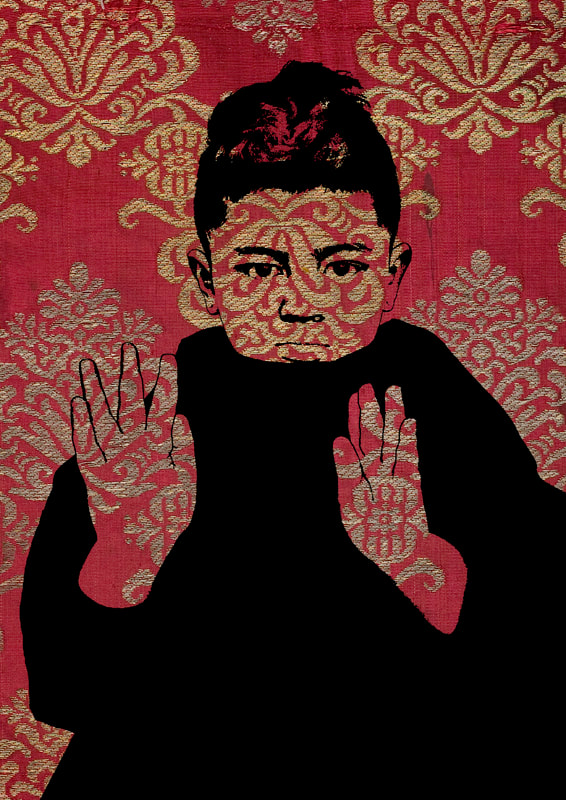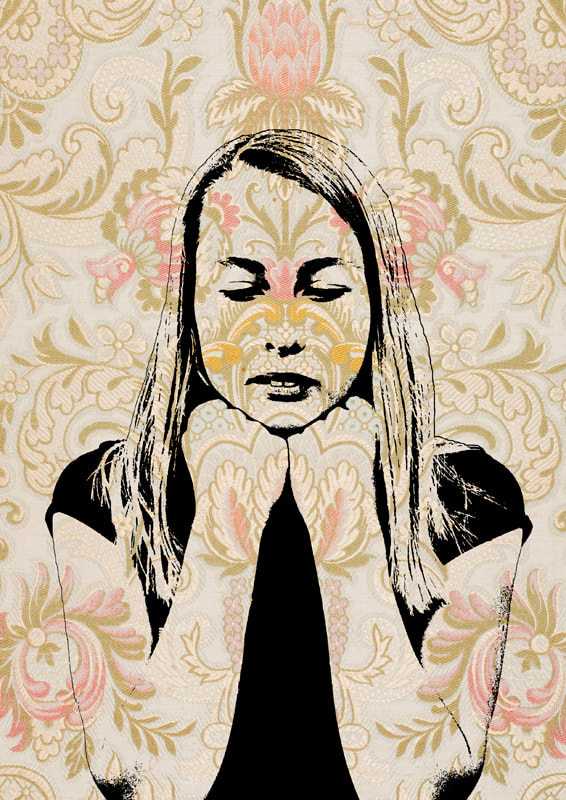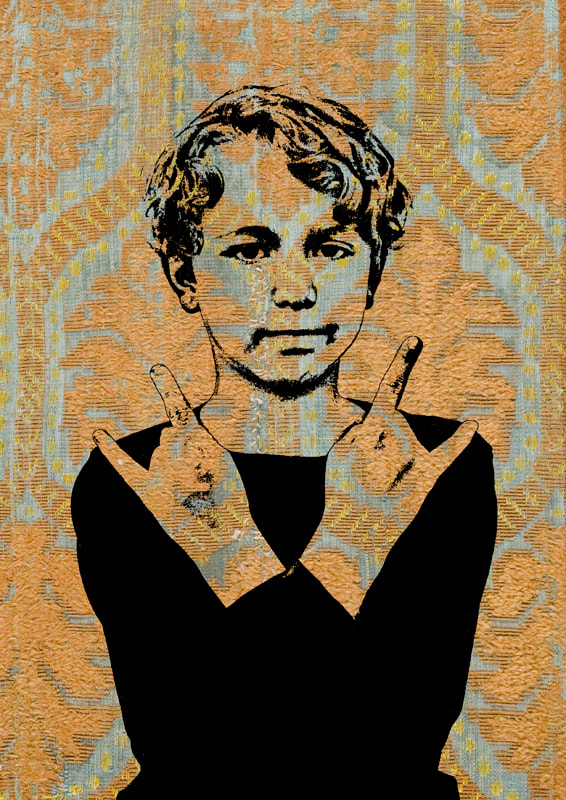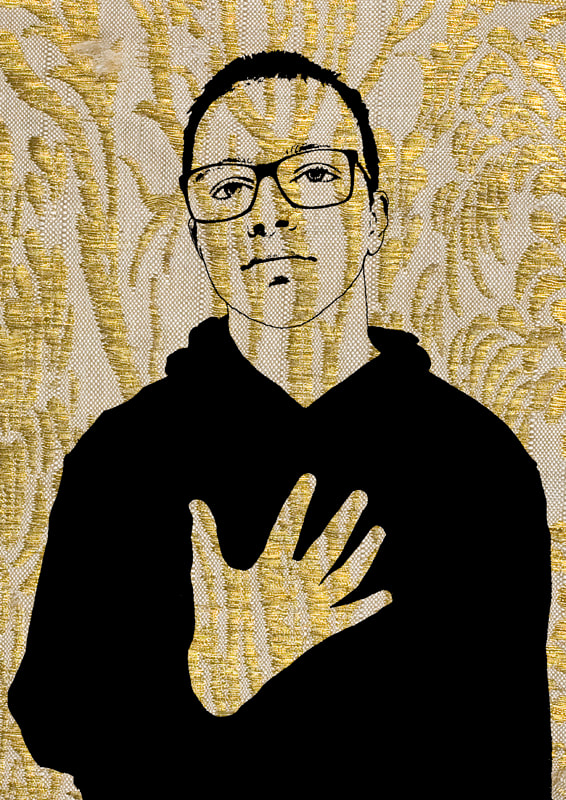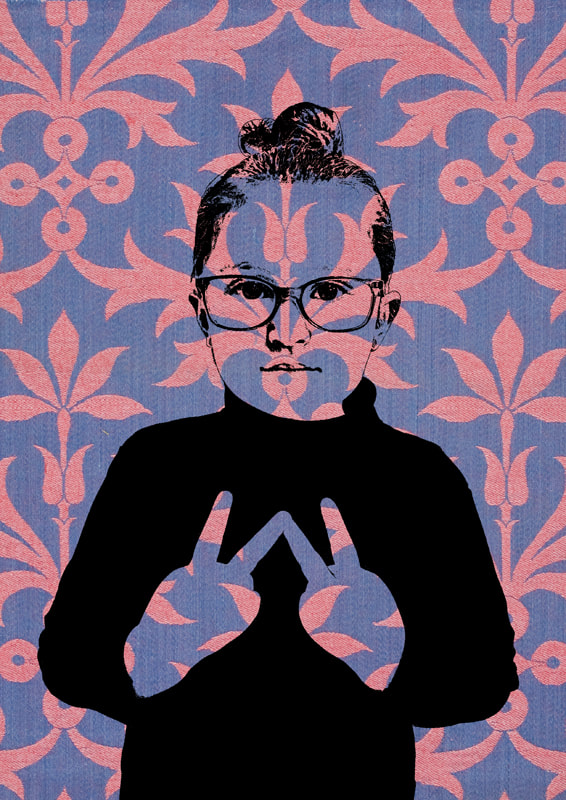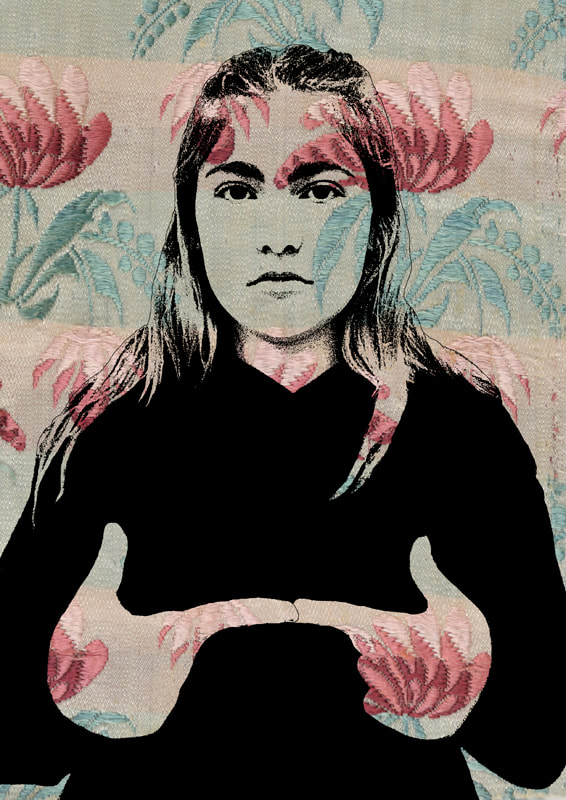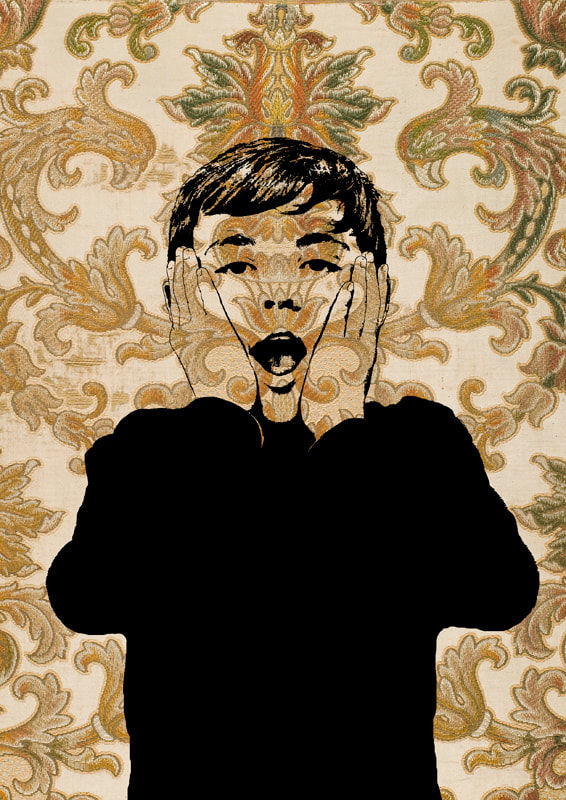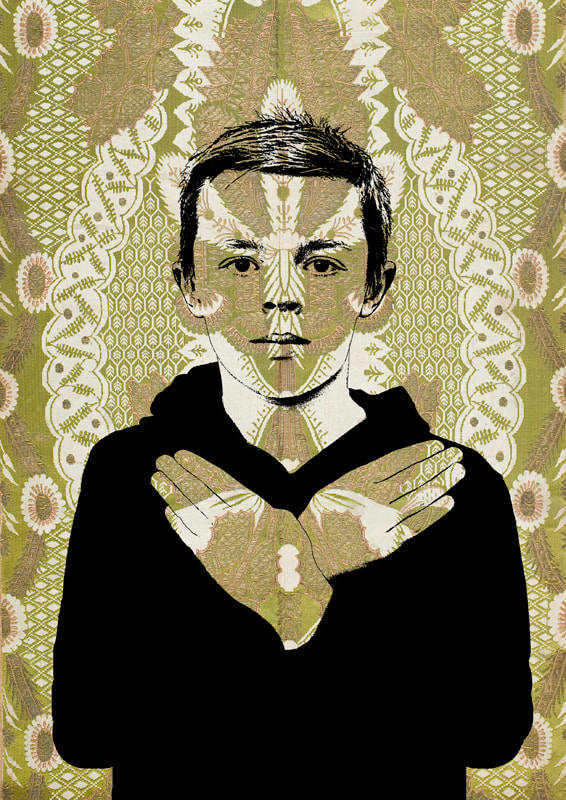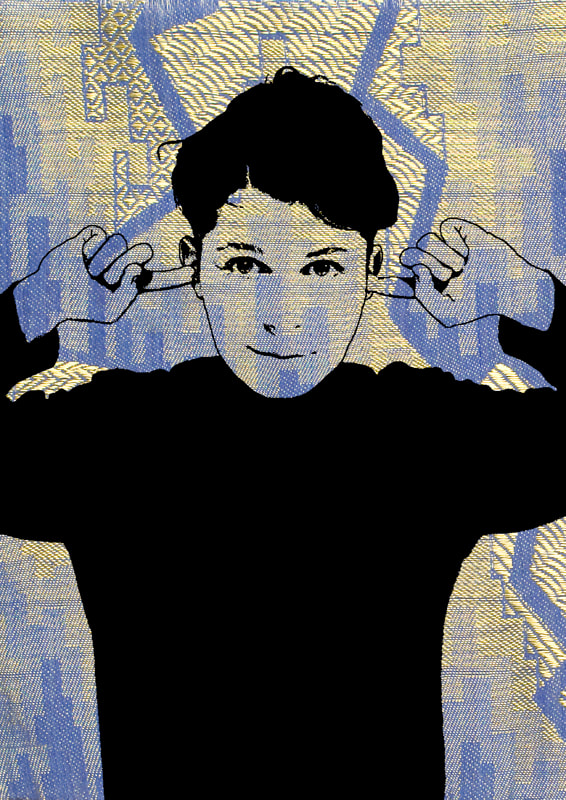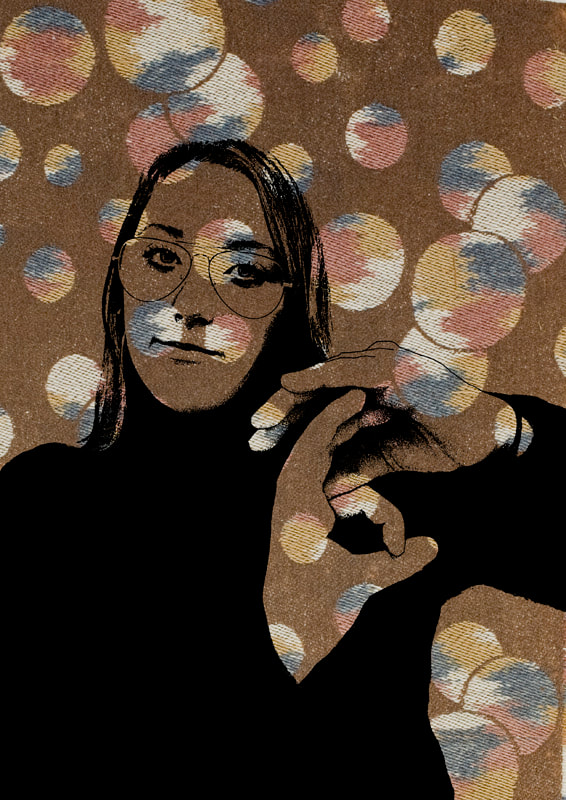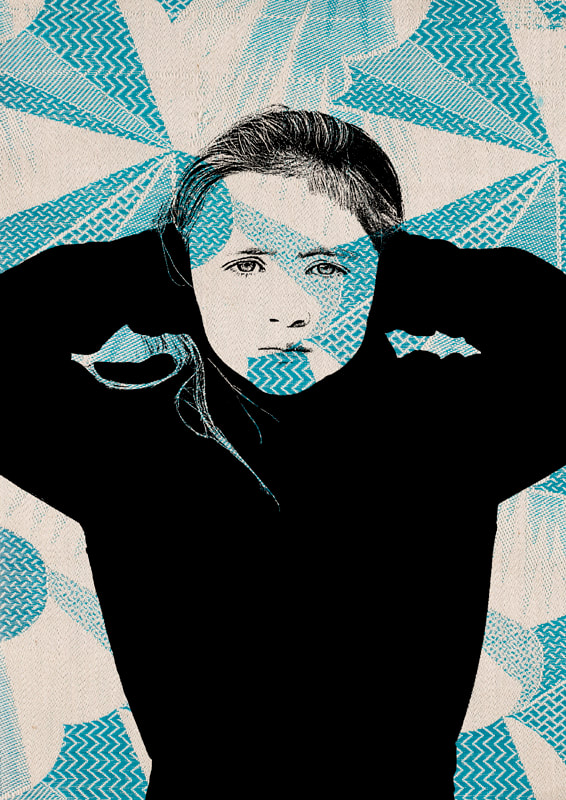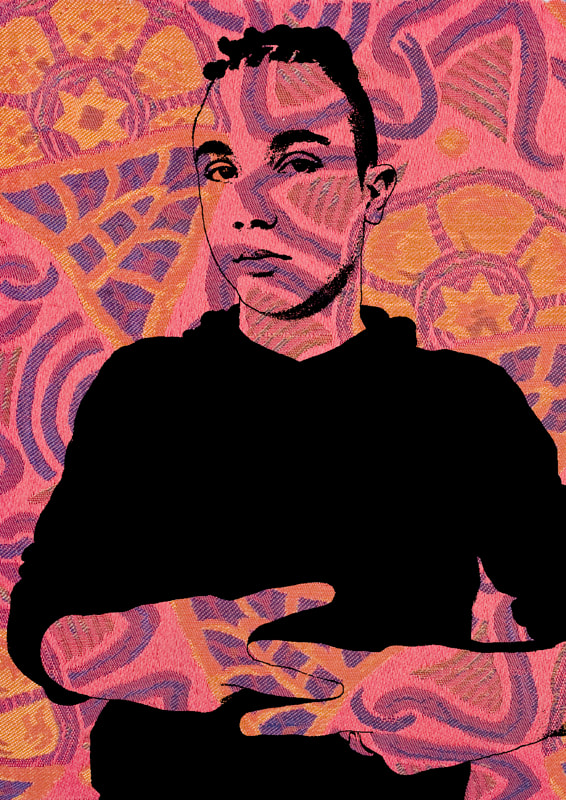Combat: lockdown, Bethune-Bruay, France (2019-2021)
"This meeting was very rich - the children lived an experience which will mark their school days. It was always easy to see the value in their work, they took the opportunity to express themselves, and everything took place in a serene and caring atmosphere. Each idea was concrete and had a precise goal. Thanks to the printing of their portrait, they also learned to look, to analyze, to respect, particularly to respect themselves.The numerous moments of dialogue and exchange allowed them to learn to listen to each other, to dare to expose their point of view. Thanks to all involved we were able, during a difficult period when it is impossible to realize outings towards cultural places, to sidestep the difficulties because ART came to us, like a breath of fresh air! The polyvalence and Andy's joie de vivre contributed to the success of the project." Coralie
I was invited to work in the community of Bethune-Bruay, France with Andrew Matthews, from October 2019 to March 2021. This residency project became more prolonged than anticipated, due to the Coronavirus global pandemic. This particular period, when most exhibitions were closed, gave us an opportunity to bring together a multitude of references, artefacts from local cultural structures’ collections, and to fulfill our objective of exposing students to the process of creation and creating opportunities for dialogue. I believe it is important to value individual art and how it relates to the empowerment of the whole community.
- In November 2020, we began making videos for students as, due to the pandemic, we believed the project could only continue remotely. We centered the project on my series, 'Combat: Manual for daily survival'. This work had been created as a participative community project.
- In the videos, we incorporated different elements from Combat: Manual for daily survival, beginning with gestures. We presented and explained the diverse gestures and invited the students to consider a gesture for their portrait photograph that was meaningful to them.
- We thought this project would be particularly suitable for the Bethune area, where small, individual textile production was active in the 19th and 20th centuries.
Last work file that resumes the project over all.
| 5__photogaphie_motif.pdf |
|
|
|
|
|
|
|
This project was beautiful, and I enjoyed it because it was interesting. The Part I preferred was stamp making. It was great. You spent many hours working on filming, and the videos were very successful. I loved everything. Therefore, you should continue the way that you work—working plus explanations. It is super!
The message I like to pass on is; It was great; I really loved it. It is an exceptional project. Maelys |
It was good; I loved working on this work and am disappointed that it is ending. I loved everything, but I preferred when we discussed why we chose the textiles and what they evoked in us. The video was well-made, and the editing was incredible. I liked the videos. I loved everything because it was well constructed.
Message; I am going to miss you. This project was incredible. I am disappointed it is ending but continue in this way. Romain |
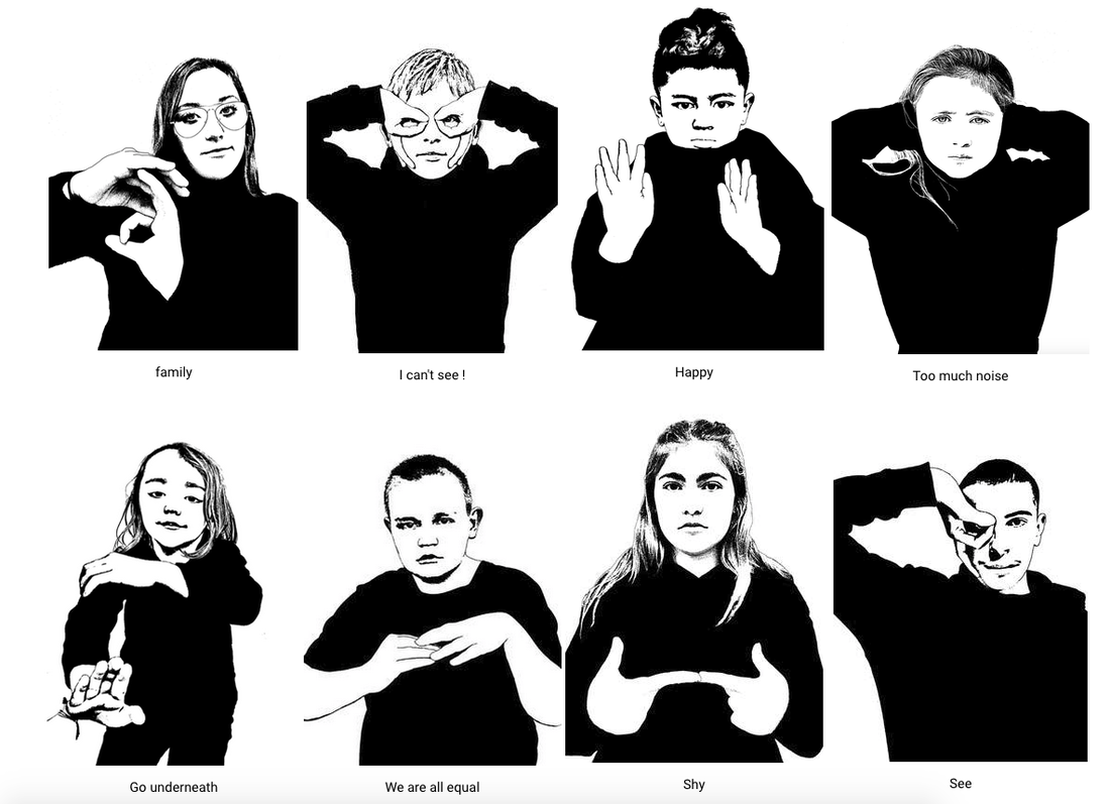
Some examples from 125 participants: Portrait photographs treated in black and white with gestures.exchanged with the teachers via email to follow up on this process, while Andrew treated the photographs in Black and white.
- To compliment the videos, I created PDF documents concerning gestures and how to photograph their portraits, in order for teachers and students to work on the first part of the work by themselves.
- My goal for these PDFs was for students to become aware of their hands and movements, feel comfortable making gestures, and think about how hand gestures are used meaningfully.
- We also asked the teachers to photograph their students and guided them in this.
| 1_Combat_confinement_gestes.pdf |
| 2_Combat_confimement_photo_couleur.pdf |
|
"What is your emblematic work?" Luca
"Where did the idea for this project came from?" Kelie
Example of how students imagined to create their final work with patterns.
|
"Why did you come to France?" Camille
Meeting : Students & teachers
- From January to March 2021, we returned to work with seven classes from kindergarten to 9th grade. Every two weeks I created a PDF to prepare teachers for our arrival the following week.
- We began with introductions from each student. For me, it is important for the collaboration to be a sharing rather than one-way giving.
- We then began to talk about works that the teachers had initiated, within the frame work our project. What were the students’ experiences? For smaller children, longer discussion was inappropriate. In-between discussions, we sang Japanese songs with gestures.
|
After the introduction and discussions, I presented their portraits. Then I began to introduce them to the textiles that we were going to use.
I asked them what they see, what they felt and eventually if they were inspired to write a story.
|
My third PDF was on the textiles. An introduction to textiles from the collection of La Piscine, definition of fabrics and textiles, how textile was created through the exchange of different civilizations, a short history of textiles in France, an introduction to Gandhi and weaving, artists' works that involve thread and weaving and the idea of social engagement - that each thread can represent an individual and the fabric, society. I asked the students to try weaving with this in mind.
| 3_combat_confinement_textile.pdf |
Examples from weaving faces of participants by Andrew Matthews
Weaving: Extract from experimentation by teachers and students
Video Collaboration
|
|
|
|
"My husband, who received Miki's emails, said that Miki must love what she does. Every time I received a PDF, I went through it then I had to take a breath. The density of information were overwhelming. Yet I managed to go through the whole PDF with my students. It was an unforgettable experience to work on the project." Marianne
Patterns
In the following week, we began to work with textile pattern. I began by preparing a PDF, which I asked the teachers to share with students in a manner appropriate to their age. This meant all the children were aware of diverse patterns, and to be able to observe them and speak about them. I also selected, for each class, 125 examples of textiles from the collection of La Piscine, for students and teachers to observe and discuss. They were physically posted to teachers in A4 format. These digital files were explored in diverse techniques.
In the PDF, I introduced:
The collection of Museum of La Piscine,
Definition of patterns,
Pattern as the environment of life, nature, trees, flowers and animals.
I wrote about what these motifs symbolized, different periods, influences of different countries, and different art movements. I also wrote about human representation dating back to cave period to selfies. How the representation of human figure is essential for survival, to unite a community and beliefs. I presented human representation patterns from the collection, dating back to 7th century Egypt, 16th century , Italy, post-18th century France, in relationship to China, the Silk road and it's production, also visiible in Ceramics, and the puppet play 'Guignol' (similar to Punch and Judy). I ended the presentation of human figures in textile up until the 20th century, which represented colonialism in France. I presented architectural patterns from the collection as well. Then I introduced local regional textiles from the Industrial Revolution. I also touched upon the aspect of narration in textiles, by introducing Toile du Jouy showing historic events such as end of slavery and the French revolution. I created a form for teachers to dialog with students. In my PDF, nothing was compulsory. Teachers chose whatever was suitable for them to work with the class.
In the PDF, I introduced:
The collection of Museum of La Piscine,
Definition of patterns,
Pattern as the environment of life, nature, trees, flowers and animals.
I wrote about what these motifs symbolized, different periods, influences of different countries, and different art movements. I also wrote about human representation dating back to cave period to selfies. How the representation of human figure is essential for survival, to unite a community and beliefs. I presented human representation patterns from the collection, dating back to 7th century Egypt, 16th century , Italy, post-18th century France, in relationship to China, the Silk road and it's production, also visiible in Ceramics, and the puppet play 'Guignol' (similar to Punch and Judy). I ended the presentation of human figures in textile up until the 20th century, which represented colonialism in France. I presented architectural patterns from the collection as well. Then I introduced local regional textiles from the Industrial Revolution. I also touched upon the aspect of narration in textiles, by introducing Toile du Jouy showing historic events such as end of slavery and the French revolution. I created a form for teachers to dialog with students. In my PDF, nothing was compulsory. Teachers chose whatever was suitable for them to work with the class.
| 4_combat_confinement_motif_web.pdf |
| 5_combat_confinement_exercices_manuels.pdf |
Textile pattern: extract of notes, experiments and creations from students & teachers
Les Papiers Peint: presentation by Samuel Bajeux
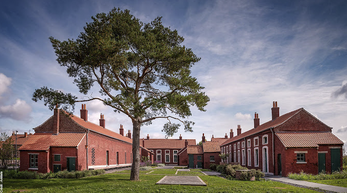
We made videos in collaboration with the La cité des Électriciens, with Samuel Bajeux, who explained the history of wallpaper patterns in the habitation of the miners. https://www.citedeselectriciens.fr/fr
Creating the textile patterns : Stamps
How were the textiles printed?
Superimposition of textiles and Portrait
Every students experimented for at least 1 to 2 sessions to choose their textiles. It needed a lot of concentration for all of them to observe, understand before they made their final choice. The textiles came from mainly 17 to 20th century creations.

